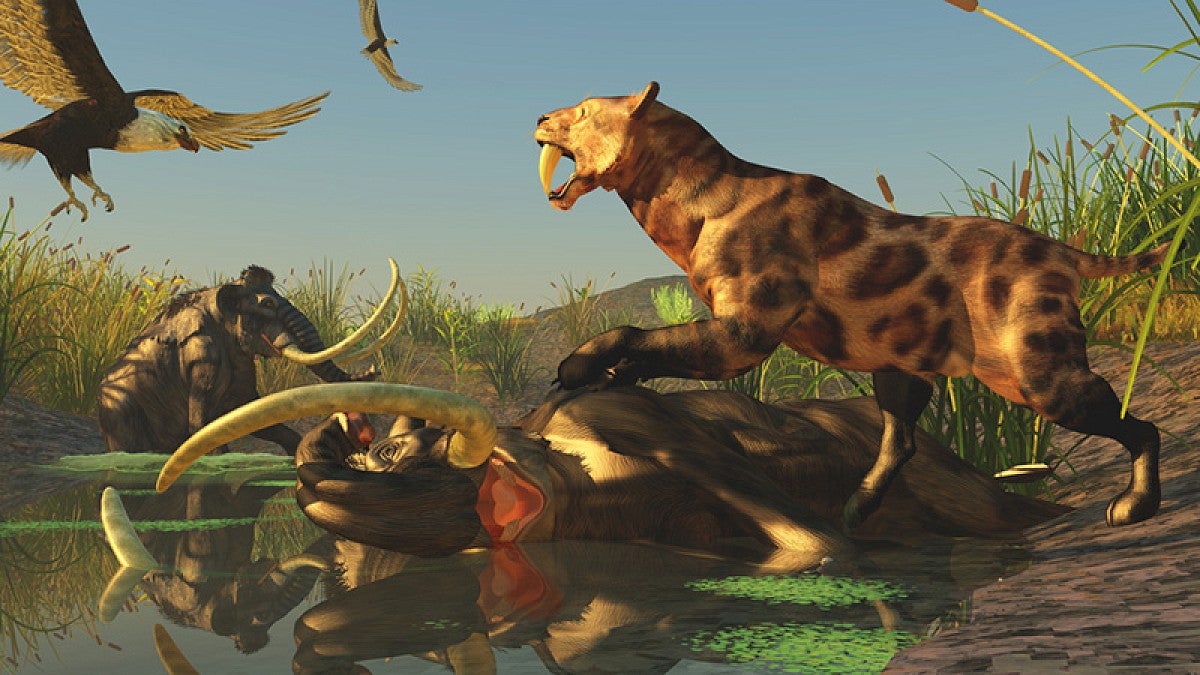Two UO graduates let the cat out of the bag this month, identifying a new saber-toothed cat species that roamed North America 9 to 5 million years ago.
Weighing in at 600 to 900 pounds, the animal emerges as one of the largest cats in Earth’s history.
Inspired by a giant feline’s forearm bone at the UO Museum of Natural and Cultural History, then-graduate student John Orcutt began a years-long effort analyzing similar specimens from museums across western North America. Jonathan Calede later joined the effort, and the pair published their findings this month in the Journal of Mammalian Evolution.
With its powerful forearms and impressive body mass, the newly identified Machairodus lahayishupup could easily have taken on prey weighing several tons.
To make the identification, Orcutt, who is now an assistant professor of biology at Gonzaga University, and Calede painstakingly investigated the forearm bones of lions, jaguars, tigers and other modern big cats to determine whether their elbow shapes could reliably differentiate one species from the next.
“We found we could quantify the differences on a fairly fine scale,” Calede said in a press release. “This told us we could use the elbow shape to tell apart species of modern big cats.”
Then they turned to the fossil record, examining the same morphological markers on the museum specimens.
“Their unique shape and size told us they were also very different from everything that is already known,” said Calede, who is now an assistant professor at The Ohio State University. “In other words, these bones belong to one species and that species is a new species.”
Edward Davis, paleontological collections manager at the museum and an associate professor of earth sciences at the UO, said the study points to the scientific importance of museum collections.
“An isolated specimen might remain in a museum cabinet for decades, and then it suddenly becomes pivotal in our understanding of mammalian evolution,” he said.
The Oregon specimen was uncovered in the northeastern part of the state, on the traditional homelands of the Cayuse, who are now part of the federally recognized Confederated Tribes of the Umatilla Indian Reservation. Orcutt and Calede worked with the tribes through the Tamástslikt Cultural Institute to name the newly identified species. Laháyis Húpup means “ancient wild cat” in the Old Cayuse language.
—By Kristin Strommer, Museum of Natural and Cultural History


